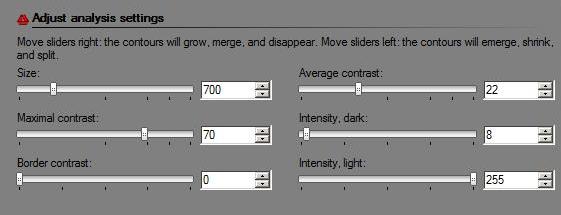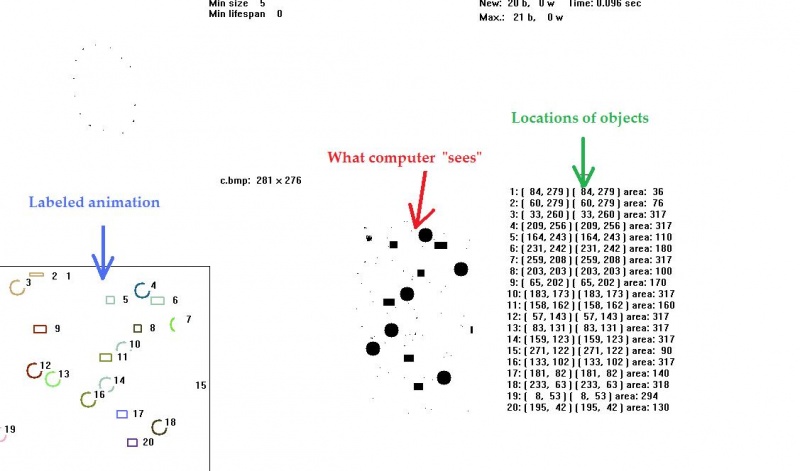Pixcavator 4.2 released
Download the new version or first read a bit about the background.
Besides a few minor improvements, the main novelty is more ways to change the analysis settings. There are six sliders now.

As before we have two sliders for the two main measurements – size and contrast. Now, the confusingly named “Max growth rate” has been remade into “Border contrast”. What does it mean? Both this and the second slider consider the difference in intensity inside the object from that of the surrounding area. But, while the contrast slider considers the maximal difference throughout the object (that why it’s now called Max contrast), the border contrast slider looks at the area just inside the contour. The result is about the same as before: it detects sharp edges, i.e. the contours with the largest difference between what’s just inside and what’s just onside of it.


The next slider works similarly but takes into account the average difference in intensity inside the object from that of the surrounding area. It’s called Average contrast.
The last two sliders simply threshold the image. For example, if you set Intensity, dark to 100, the contours of dark objects will the intensity equal to exactly 100. If you set Intensity, light to 100, the contours of light objects will the intensity equal to exactly 155 (here 155=255-100). It was set this way in order to ensure that contours grow as you move any of the six sliders from left to right. This is a very unsophisticated tool but it’s quite effective when the image lighting is uniform.
The need for introducing these new tools came from a specific, real life image analysis task: Measuring staining in the liver.
Reminder to the current customers: you can download the new version and activate it with your current serial number.
Reminder to the rest: the new price $195 won’t become effective until June 15.
Digital discoveries
- Casinos Not On Gamstop
- Non Gamstop Casinos
- Casino Not On Gamstop
- Casino Not On Gamstop
- Non Gamstop Casinos UK
- Casino Sites Not On Gamstop
- Siti Non Aams
- Non Gamstop Casinos UK
- UK Casino Not On Gamstop
- Non Gamstop Casino UK
- UK Casinos Not On Gamstop
- UK Casino Not On Gamstop
- Non Gamstop Casino UK
- Non Gamstop Casinos
- Non Gamstop Casino Sites UK
- Best Non Gamstop Casinos
- Casino Sites Not On Gamstop
- Casino En Ligne Fiable
- UK Online Casinos Not On Gamstop
- Online Betting Sites UK



